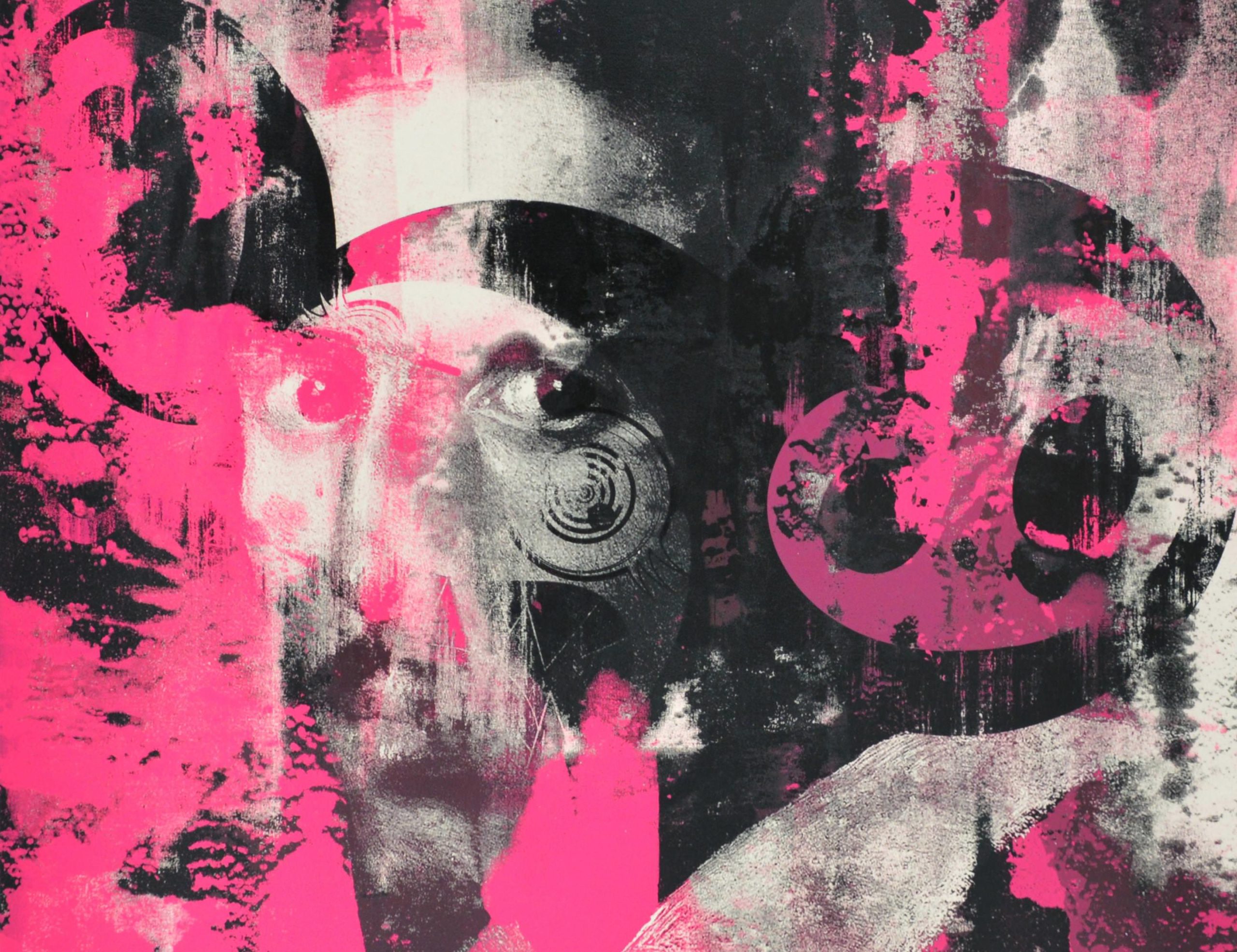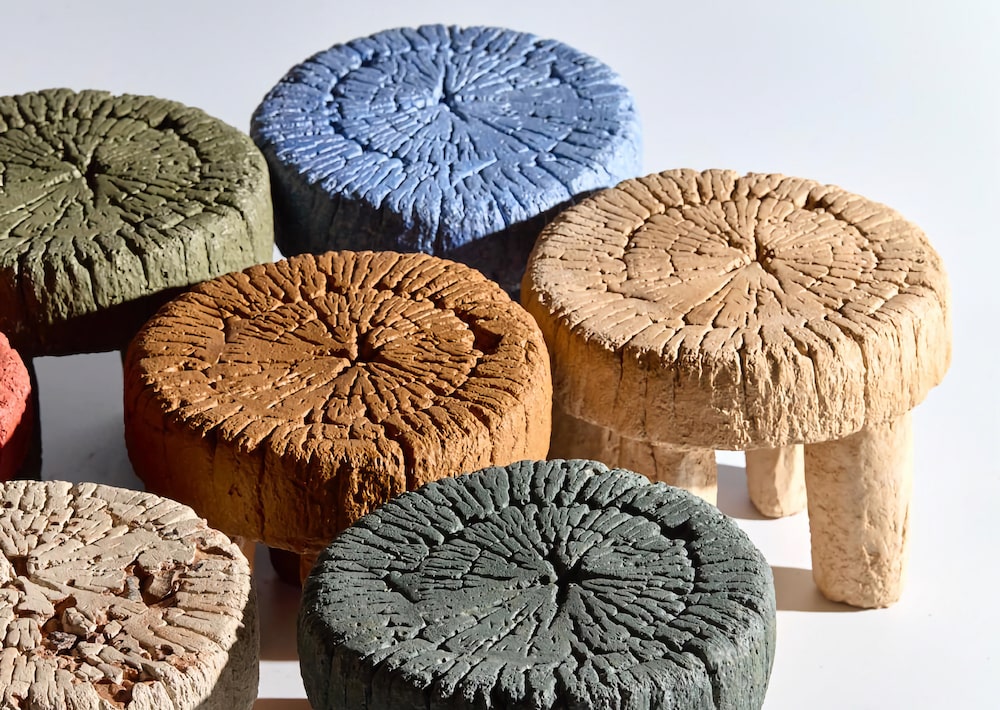Constantly, our world is abuzz with newness—new products, new events, and new collaborations. We’re living in an age that only our past selves could dream up, and the history we are creating is changing and intensifying by the minute. Both artist Takashi Murakami and designer Virgil Abloh know those cultural desires well. And now, they’ve come together to bring our attention to “Future History” at Gagosian Gallery in London.
In Murakami’s Kaikai Kiki studio in Tokyo, the duo worked on a unique series of paintings that exude their signature styles. On view through April 7, the works shake up broad topics—like stratified cultural production, the definition of art—with recognizable artistic gestures and touches of cultural and art historical references.
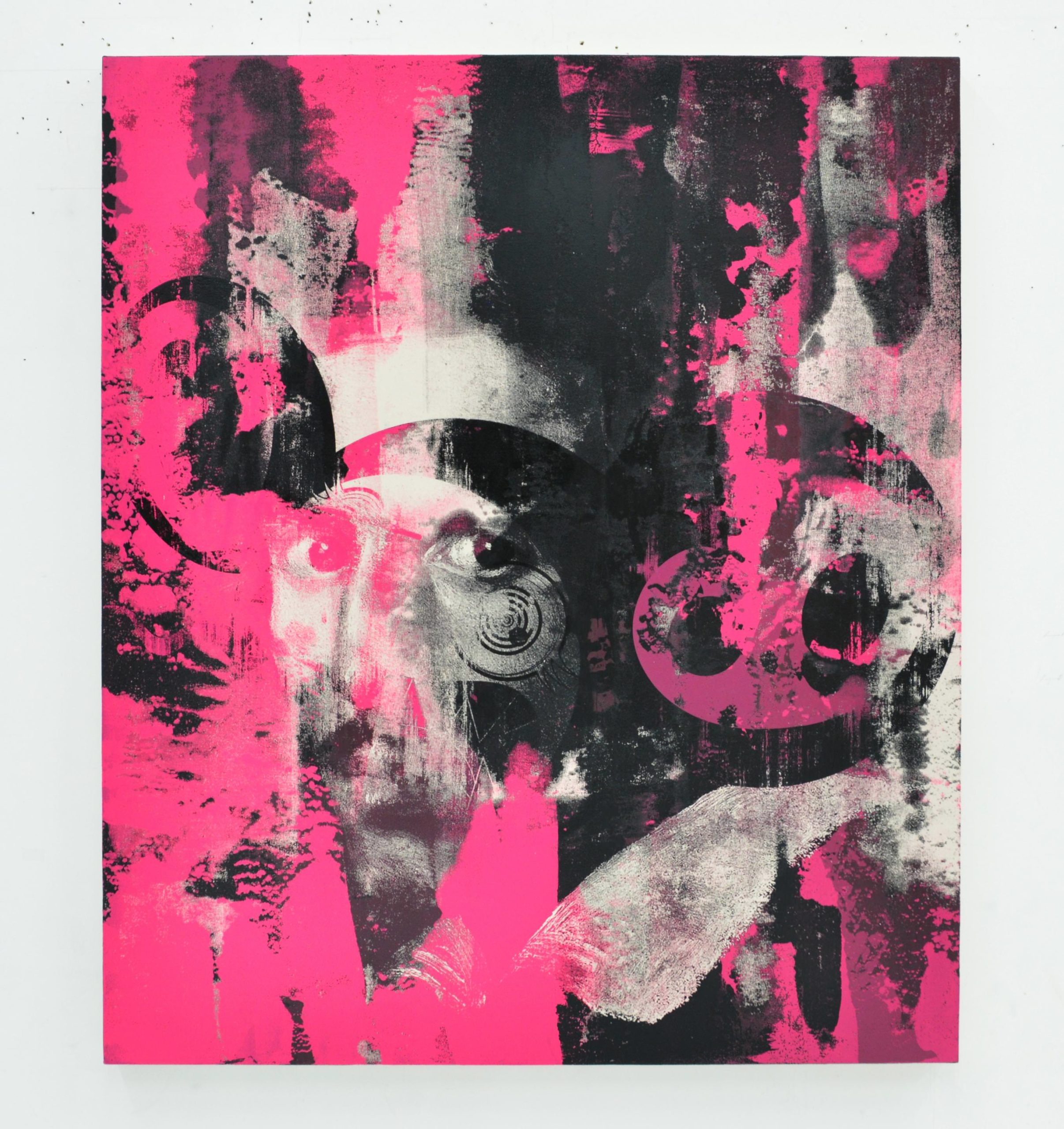
Takashi Murakami and Virgil Abloh.
Glance Past the Future, 2018.
Acrylic on canvas mounted on aluminum frame.
55 1/2 × 47 1/4 inches (141 × 120 cm).
© Virgil Abloh and © Takashi Murakami.
“The uniqueness of our collaboration lies in that it further expands the meaning of art’s existentence,” said Murakami.
To hear more about the show, and what type of future history we are living in now, we spoke with both Murakami and Abloh.
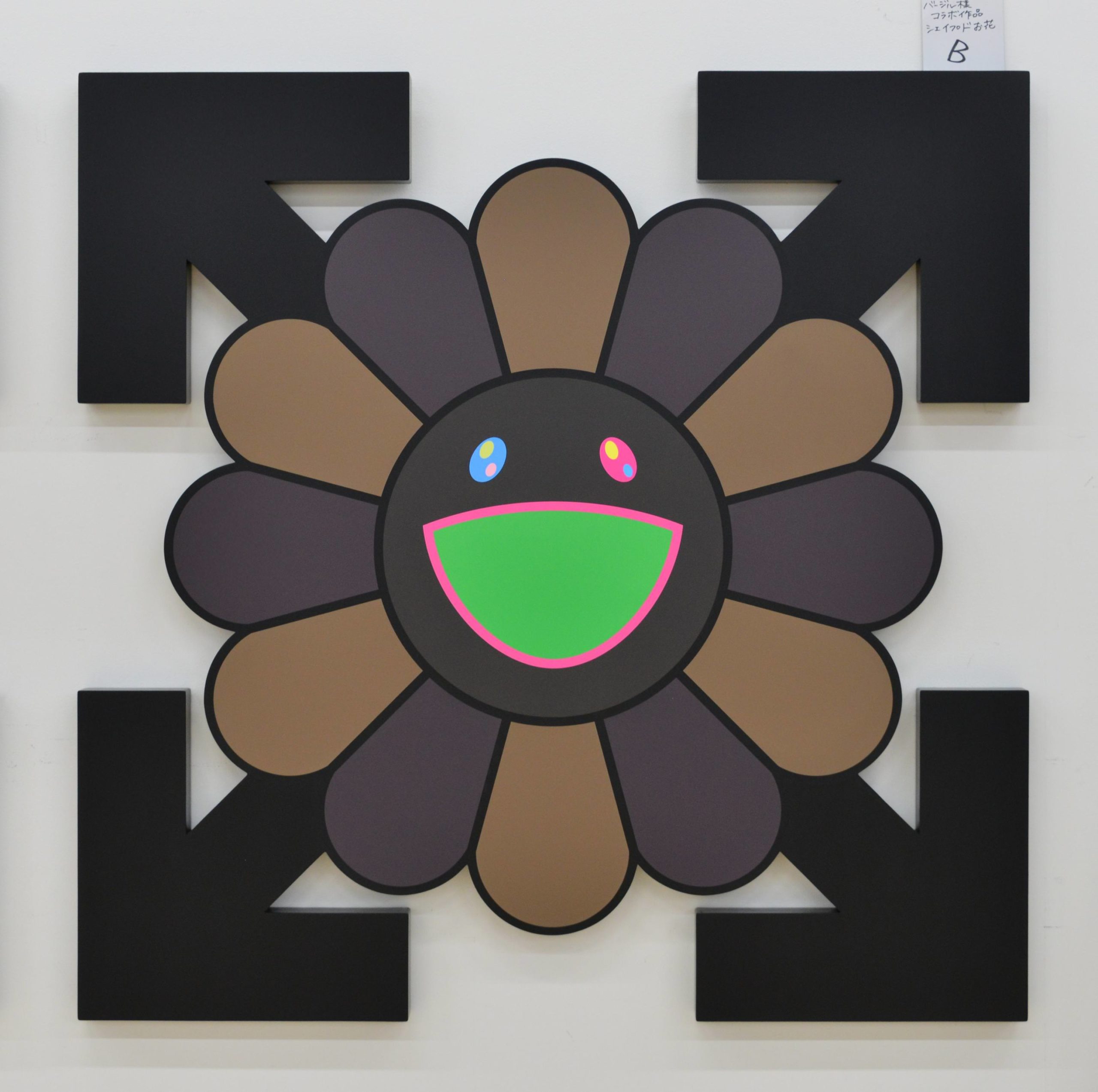
Takashi Murakami and Virgil Abloh.
TIMES NATURE, 2018.
Acrylic on canvas mounted on board.
59 1/16 × 59 1/16 × 2 inches (150 × 150 × 5 cm).
© Virgil Abloh and © Takashi Murakami.
WHITEWALL: Takashi, could you tell us a bit about the creative process of working together in your studio in Tokyo?
TAKASHI MURAKAMI: My studio at Kaikai Kiki is centered around me, but we divide up the production tasks and processes. So this time, when Virgil visited us at the studio, we were able to respond to his wishes and requests to make the preparation and production happen. What I mean to say is that I think it was crucial how we managed to orchestrate all the people we worked with.
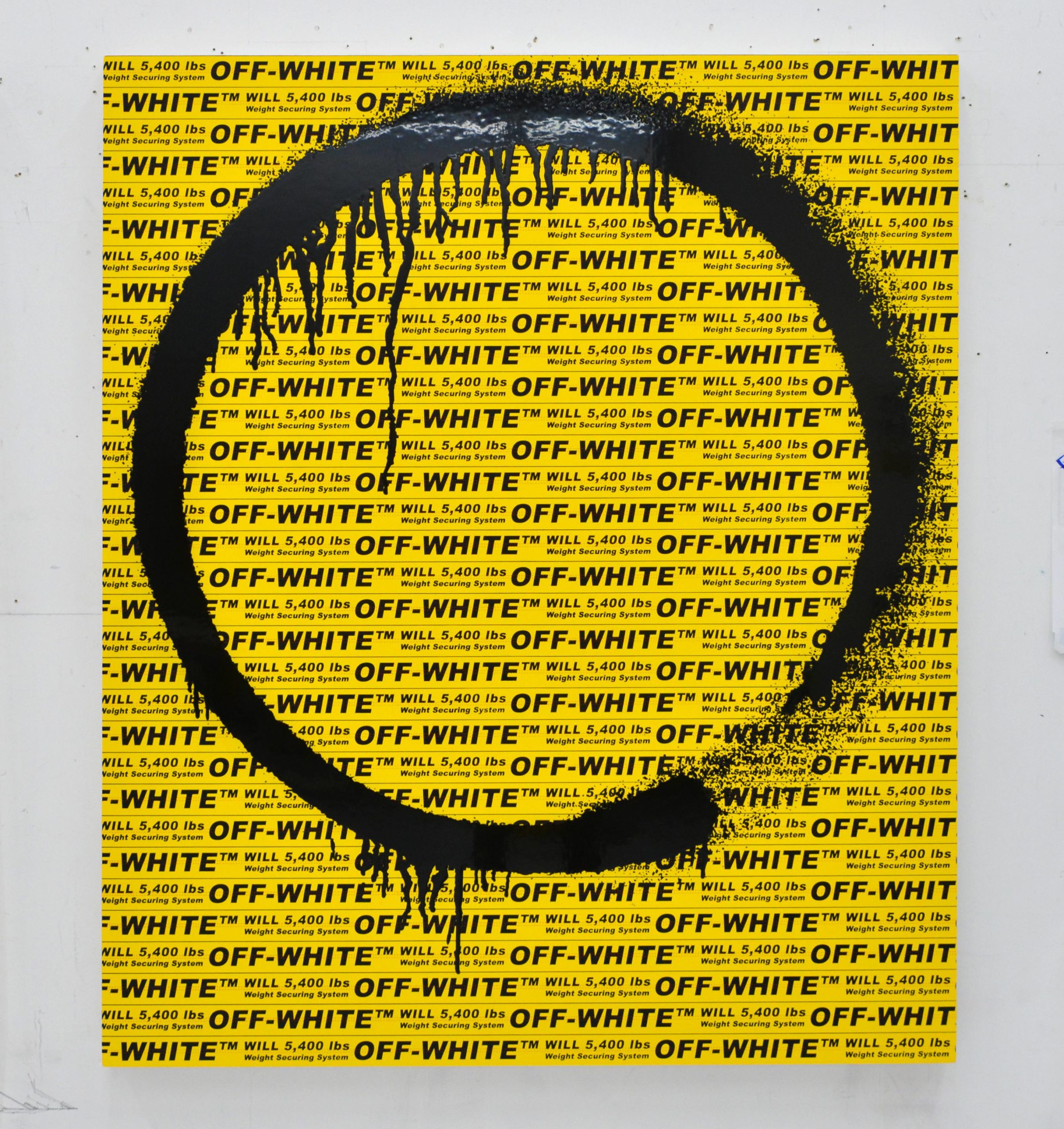
Takashi Murakami and Virgil Abloh.
Kyoto Ensō, 2018.
Acrylic on canvas mounted on aluminum frame.
55 1/2 × 47 1/4 × 2 inches (141 × 120 × 5 cm).
© Virgil Abloh and © Takashi Murakami.
WW: This “future history” is a reflection of the time we are living. What type of time would you say right now is?
TM: I think it’s the time in which motivations and goals for which we live are rapidly and drastically changing. The process of diligently researching about and training in one thing or another in order to achieve something, and to obtain satisfaction, is no longer deemed so important. Rather, once we set a goal, we now have to reach that goal as soon as possible and then find our next goal to achieve.
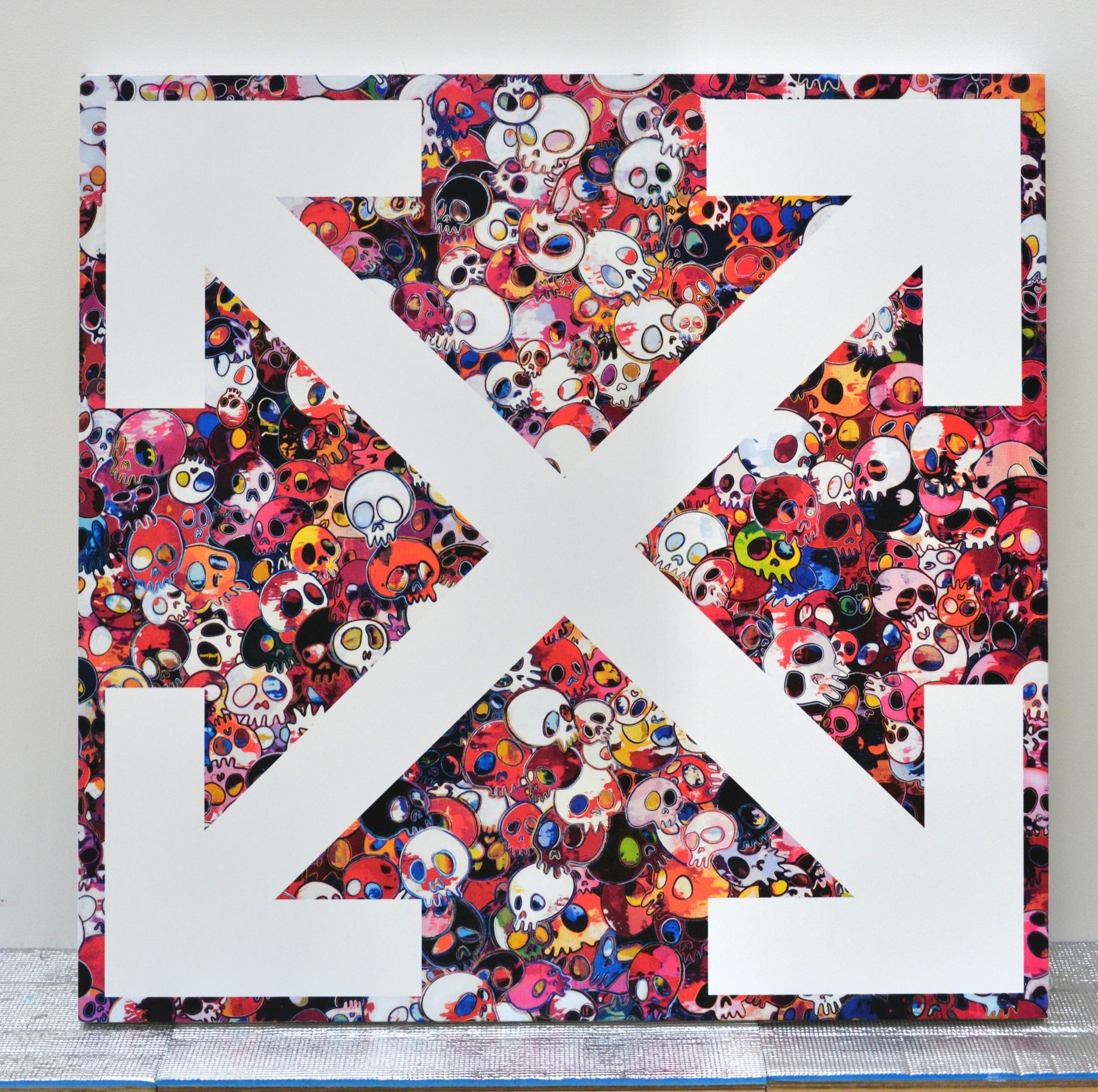
Takashi Murakami and Virgil Abloh.
Our Spot 1, 2018.
Acrylic on canvas mounted on aluminum frame.
39 3/8 × 39 3/8 × 2 inches (100 × 100 × 5 cm).
© Virgil Abloh and © Takashi Murakami.
WW: What about Virgil has left an impression on you?
TM: Virgil is an artist who makes you take note of subtle changes that are ubiquitous yet totally unnoticed by others. I have been deeply impressed by such awareness of his.
WW: What type of subversive or inadvertent messages can be found in this series?
TM: The meaning of art as a medium has constantly been changing over time. Once, its purpose was to fulfill the demands of clients in the form of portraits, among others, or to aesthetically explain the religious teachings in the context of churches. Since the 19th century, artists have sought their own motivations for creating art and to share them. Recently, I feel that artists tend to have to respond to the needs of the visitors to museums and other public institutions. While you of course cannot create anything inspirational by merely responding to such needs, if you completely ignore them, your works would end up being self-righteous. As a result, there is a tendency now for artworks to invite the viewers’ participation in, asking, “What is art?”
For this project, Virgil’s and my teams communicated day in and day out over WhatsApp, producing paintings and sculptures by supplely responding to ever-changing ideas. For me, the theme of the project is to explore how these works might trigger the viewers’ thoughts. I especially hope these works would bridge the tastes of those in the street culture and the art world; that they would become the trigger for their thoughts about art.
WW: What are you hoping the viewer takes away from this exhibition?
TM: I am hoping that among the viewers of this show, someone would end up inventing something so entirely new as to make us obsolete in the future. We have scattered hints to that effect throughout our works.
WW: Both of your practices vastly gain inspiration and span cultural references from various industries, cultures, sub-cultures, art movements and materials, and more. What is most inspiring to you on a daily basis?
TM: That would be the communication with those around me. In my case, the daily inspirations are in my relationship with those I work with in my studio.
WW: Virgil, what was it like working with Takashi at his studio in Tokyo?
VIRGIL ABLOH: With any other fellow artist, their process is the epicenter of the ethos. Murakami’s studio is nothing short of inspiring and vast. Concepts come to life quickly because it’s a great place to think.
WW: What type of “future history” would you say we are we living in now?
VA: The effects of the internet and international travel have crashed cultures in a very direct way. Our collaboration is exactly that. Worlds and aesthetics collided.
WW: You said that we are driven to make artworks shaped by societal observations. What type of societal observations are most prominent right now to you?
VA: That of above. Central to my practice is recording the human existence I see in all tangible objects. Objects that I deem tell a story of now.
VA: I feel like we are creating an intersection point for different sections of the art world and general public to collide.
WW: What inadvertent message can be found in this series?
VA: There are embedded ideas of branding re-branding itself and masking itself within the works.
WW: Both of your practices vastly gain inspiration and span cultural references from various industries, cultures, sub-cultures, art movements and materials, and more. What is most inspiring to you on a daily basis?
VA: Not much inspires me more than real life and coincidence.


